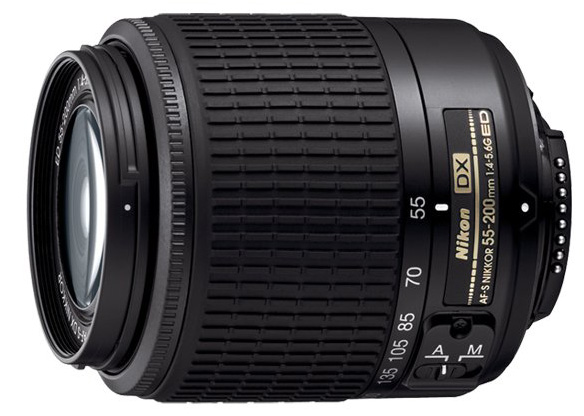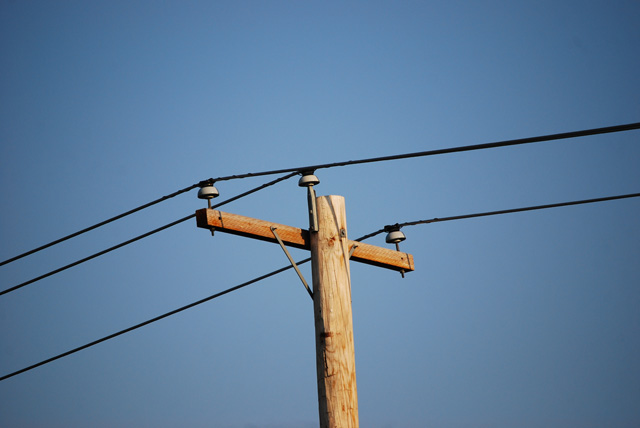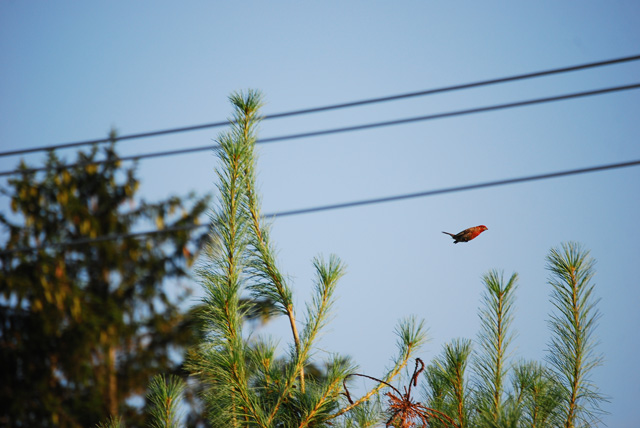Nikon AF-S DX Zoom-Nikkor 55-200mm f/4-5.6G ED Lens

Introduction
This lens is best summed up in one word: "cheap."
I no longer own this lens as I gave it away to a friend of mine. He stopped using it so we agreed to give it to another friend of ours. They are now using the Nikon 18-200mm VR lens instead.
Specifications
This lens is comprised of 13 elements in 9 groups and weighs just nine ounces. There are at least two elements of ED glass, so on paper I would think this lens should do quite well.
Minimum Aperture: f/4 to f/5.6 - This is terribly slow. At 55mm this lens is f/4, are you kidding me?
Maximum Aperture: f/22 to f/32 (55mm to 200mm)
Manual Focus: A joke, right? You have to turn this slim ring at the front of the lens. Very annoying.
Build: Cheap, plasticy, and cheap. The mount is plastic, the body is plastic, and that focus ring is nearly as slim as a paper clip.
Filter Thread: 52mm. Here's the first thing half-way right about this lens: it uses one of the major two sizes of Nikon filters (the other being 77mm). This filter size is also the same as 18-55mm, which meets this one at the 55mm mark. The two are often sold together to new camera buyers and since they take the same filters this means if you are going to get into the fun of CPLs and such, you only need one size for the two lenses you are likely to have.
Performance
For what it is, this lens does an almost half-way decent job. Okay, maybe I'm being too harsh, the lens can take nice photos, but be sure you have lots of light since it is so slow what with being f/4 at merely 55mm which is just the start of this zoom.
Because the lens is so cheap, if you affix it to a more professional, and therefore heavier, camera then I suggest that you not pick it up by the lens as it may break. Yes, I'm being serious, it is that cheap.
You can see how this lens compares to two other 200mm capable lenses in this 200mm Lens Shootout.
Alternatives
Everything is an alternative to this lens.
The Nikon 18-200mm VR lens covers this same zoom range and is just as slow, but it is a little more contrasty (this is a good thing) and covering more of a zoom range it is more user-friendly since you aren't changing lenses all the time to go from near to far.
Nikon has added its VR technology to this lens. This is a gimmick to help overcome how slow this lens is. VR does nothing to aid with any optical issues, such as how washed out the center can be. If I had to choose between the VR and the non-VR flavors I don't know what I would pick. The VR versions costs more, and I can't recommend anyone spend anything on this lens to start with, but there are situations where VR is a good thing to have. I guess it is a choice between poison and diet poison: neither is good, but I guess the one is a little better for you.
However, if you have the money, and only want to buy one lens and be happy for years, then I would give serious consideration to the professional-grade 80-200mm lens. It is a thing of beauty and just one second with that lens on your camera will make you want to give away your 55-200mm to the next person you meet.
Examples

Vignetting: Notice how much darker the corners are compared to the center of this image? That is not a desirable output for any lens.

Poor bokeh seen in this image means that this is not a great portrait lens.

All of my complaining aside, if I didn't have a 200mm lens on my camera when this bird flew I would have missed it, and I think even a picture taken with a bad lens is better than no picture at all.